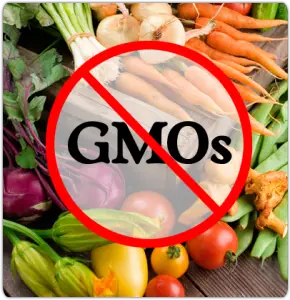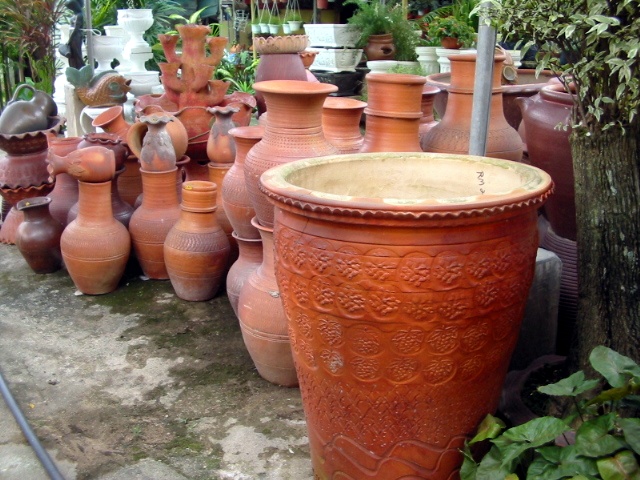The Cornucopia Institute, a non-profit organization that promotes honest food and sustainable farming practices, has revealed details of the USDA's conspiracy with agribusiness interests to mislead consumers over the sterilization of almonds. A press release from the Cornucopia Institute, reprinted below, explains that new rules concerning the pasteurization of almonds are an "inside job," made without any real opportunity for public comment.
The new rules requiring all California almonds to be pasteurized would also place a heavy financial burden on small growers and family farms, ultimately putting many of them out of business, further concentrating control of the food supply in the hands of a few powerful corporations.
The Cornucopia Institute is concerned about the general trend towards the secretive processing of foods with chemicals or radiation, without honest labeling.
The USDA and agricubusiness interests are right now plotting to allow irradiated food to be labeled "pasteurized," with no indication whatsoever of them being subjected to radiation. The purpose of this deception is to deny consumers information about how their foods have been processed, tricking them into purchasing irradiated foods that they might normally avoid.
"USDA is being run lock, stock, and barrel by agribusiness and has abandoned its duty to protect the public and the farming community. This USDA decision, along with FDA's long-standing refusal to label genetically engineered
food, and its recent decision to attempt to label irradiated foods as "pasteurized," is a conscious effort by the Administration to leave consumers in the dark about the dangers lurking in their food." - Andrew Kimbrell, the Director of the Center for Food Safety
"Raw" Almonds Must Soon be Steam-Heated or Treated with Toxic ChemicalCORNUCOPIA, WI: Small-scale farmers, retailers, and consumers are outraged over a new federal regulation that will require all almonds grown in California to be sterilized with various "pasteurization" techniques. The rule, which
the USDA quietly developed in response to outbreaks of Salmonella in 2001 and 2004, traced to raw almonds, mandates that all almonds undergo a sterilization process that includes chemical and / or high-temperature treatments.
Although the final rule was just published in the Federal Register, The
Cornucopia Institute, a Wisconsin-based farm policy research group, is asking the USDA to reopen the proceeding for public comment. Cornucopia contends that the rule was never effectively announced to the public, and that the reasoning behind both the necessity and safety of the sterilization processes should be questioned before the rule goes into effect this September.
"The new rule is unwarranted and could have many harmful impacts," said Mark Kastel, senior farm policy analyst at Cornucopia. "The costs of the chemical and heat treatments, in addition to the costs of transporting and recording the new procedures, will be especially onerous on small-scale and organic farmers, and could force many out of business."
The only exemption to these new regulations will be organic "raw"
almonds that will not be fumigated, but will undergo the steam-heat treatment, and small-scale growers who can sell truly raw almonds but only direct to the public from farm stands.
Although foodborne illnesses have garnered headlines in recent years, including contamination of California-grown spinach and lettuce, raw produce and nuts are not inherently risky foods. Contamination occurs when livestock manure or fecal matter is inadvertently transferred to food through contaminated water, soil, or transportation and handling equipment. Raw foods can also be infected by poor employee sanitation either on the farm or in processing facilities.
Glenn Anderson, a small-scale organic almond farmer in the central valley of California, worries that "This could be one more way for the big companies and the government to put us small farmers out of business."
The equipment to sterilize almonds is very expensive. A propylene oxide chamber costs $500,000 to $1,250,000, and a roasting line can cost as much as $1,500,000 to $2,500,000.
Anderson also questions the scientific logic behind the rule. He and some other growers believe that the sustainable farming methods they use, such as mowing and mulching, rather than controlling weeds by chemical herbicide applications, protect biodiversity and naturally prevent the spread of harmful bacteria more effectively than the artificial process of pasteurization (sterilization) -- which attempts to mitigate contamination after the fact. According to growers practicing sustainable farming methods, the USDA plan ignores the root causes of food contamination -- the dangerous and unsustainable farming practices on industrial farms.
Consumers who oppose the new regulation also worry about its impact on the quality and nutrition of pasteurized almonds, since the Almond Board of California (a marketing arm of the USDA) has conducted the only study on the practice. Their research concluded that "there was no significant degradation in the quality" of the almonds. "The validity of these findings is questionable given the vested interests of the research panel," Kastel stated.
The most common method of sterilizing almonds is by propylene oxide fumigation. Propylene oxide is a genotoxic chemical and is listed as a possible carcinogen by the International Agency on Cancer Research. In lab experiments, the chemical leads to gene mutation, DNA strand breaks, and neoplastic cell transformation. It is listed as a "possible" carcinogen because no long-term studies have been done with humans. Its use for treating food for human consumption is banned in the European Union, Canada, Mexico, and most other countries.
It is The Cornucopia Institute's contention that even if independent research concludes that treated almonds are in fact safe, labeling them as "raw" is misleading and deceptive to
consumers, many of whom wish to purchase truly raw, unprocessed almonds. "Raw foods are increasingly in demand. The new rule is another case of the public being deprived the opportunity to intelligently choose their food supply," said Jimbo Someck, who owns and operates four of the country’s leading independent natural food stores, in the San Diego area.
The new regulation to sterilize almonds coincides with the recent announcement by the Food and Drug Administration that it intends to relax its labeling requirements for irradiated food. The FDA proposal will also allow irradiation, the controversial ionization process, to be called pasteurization -- a reference that is troubling many food safety watchdogs.
"Consumers deserve to know how their food has been processed," said Food and Water Watch Executive Director Wenonah Hauter. "Mislabeling irradiated food as 'pasteurized' or treated food as 'raw' is an industry attempt to make consumers buy products that they otherwise might avoid."
In light of heightened public concern, the Cornucopia Institute has appealed to USDA Secretary Mike Johannes to postpone implementation of the new regulatory requirements and reopen the almond docket to public comment. Only 18 public comments -- all from the almond industry -- were received on the proposal. Unlike consumers, retailers, or other organizations concerned with food safety, all almond handlers received a personal letter or fax from the USDA alerting them to the sterilization proposal and inviting them to comment.
"The industry and the USDA tried to slip this through quietly, under the radar, without adequate public scrutiny," Cornucopia's Kastel lamented. "We are asking the Secretary of a unit of government that Abraham Lincoln referred to as the ‘People's Department’ to intervene so concerned citizens can have a say. The close collaboration, away from the eyes of the citizens and the media, we are sure, is not something the Secretary will feel good about."
An action alert with instructions for contacting the USDA, and a sample letter interested consumers can send to the USDA and California Almond Board, can be found on the Cornucopia Institute Website:
www.cornucopia.orgAccording to Andrew Kimbrell, the Director of the Center for Food Safety, "The decision to foist fumigants on unsuspecting almond consumers is just another example of an agency out of control." Adds Kimbrell, "USDA is being run lock, stock, and barrel by agribusiness and has abandoned its duty to protect the public and the farming community. This USDA decision, along with FDA’s long-standing refusal to label genetically engineered food, and its recent decision to attempt to label irradiated foods as "pasteurized," is a conscious effort by the Administration to leave consumers in the dark about the dangers lurking in their food."
FDA regulations currently require that all single-ingredient foods that have been irradiated and are sold by retailers must be labeled as "treated with irradiation" and must display the radura symbol.
A comprehensive fact sheet on the almond issue can be viewed at
www.cornucopia.org/Almond_FactSheet.pdf and a sample letter for interested individuals to send to the USDA can be found at
www.cornucopia.org/Almond_SampleLetter.docThe Cornucopia Institute (
www.Cornucopia.org) is dedicated to the fight for economic justice for the family-scale farming community. Through research, advocacy, and economic development, our goal is to empower farmers both politically and through marketplace initiatives.
Learn more:
http://www.naturalnews.com/021783_the_USDA_food_labeling.html#ixzz2FQBXMr00 

.jpg)






.jpg)










 Monday, April 09, 2007
Monday, April 09, 2007





